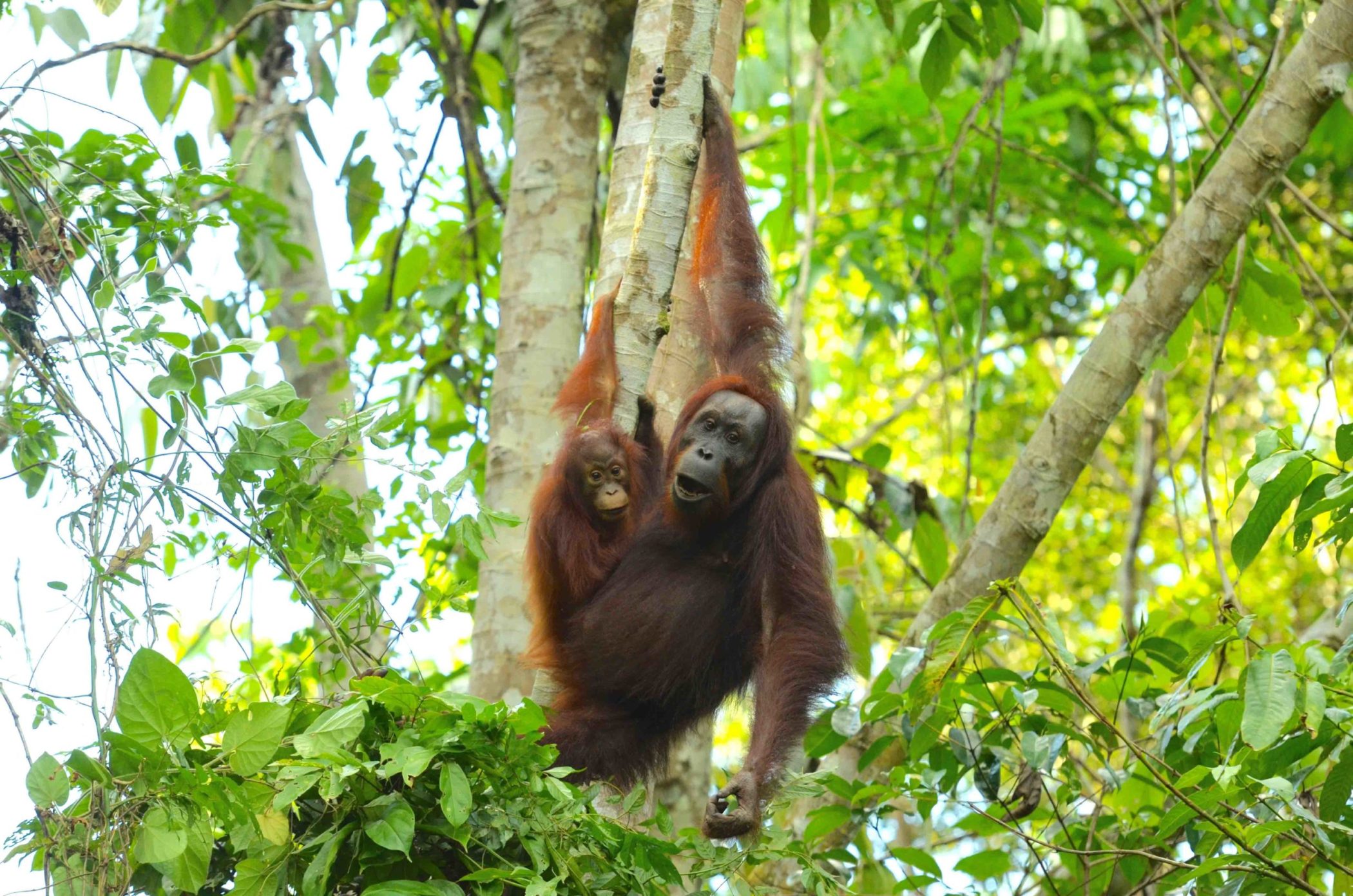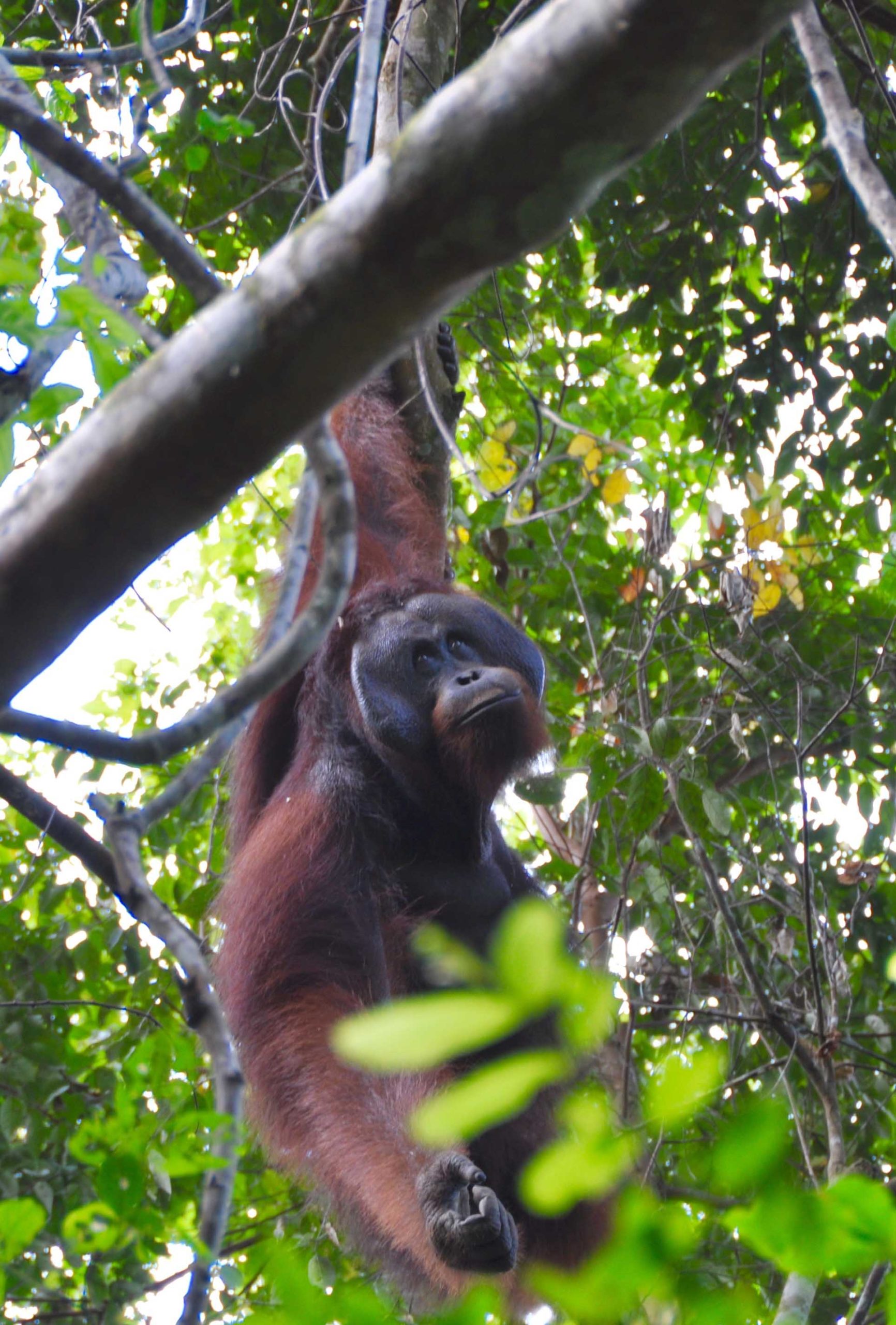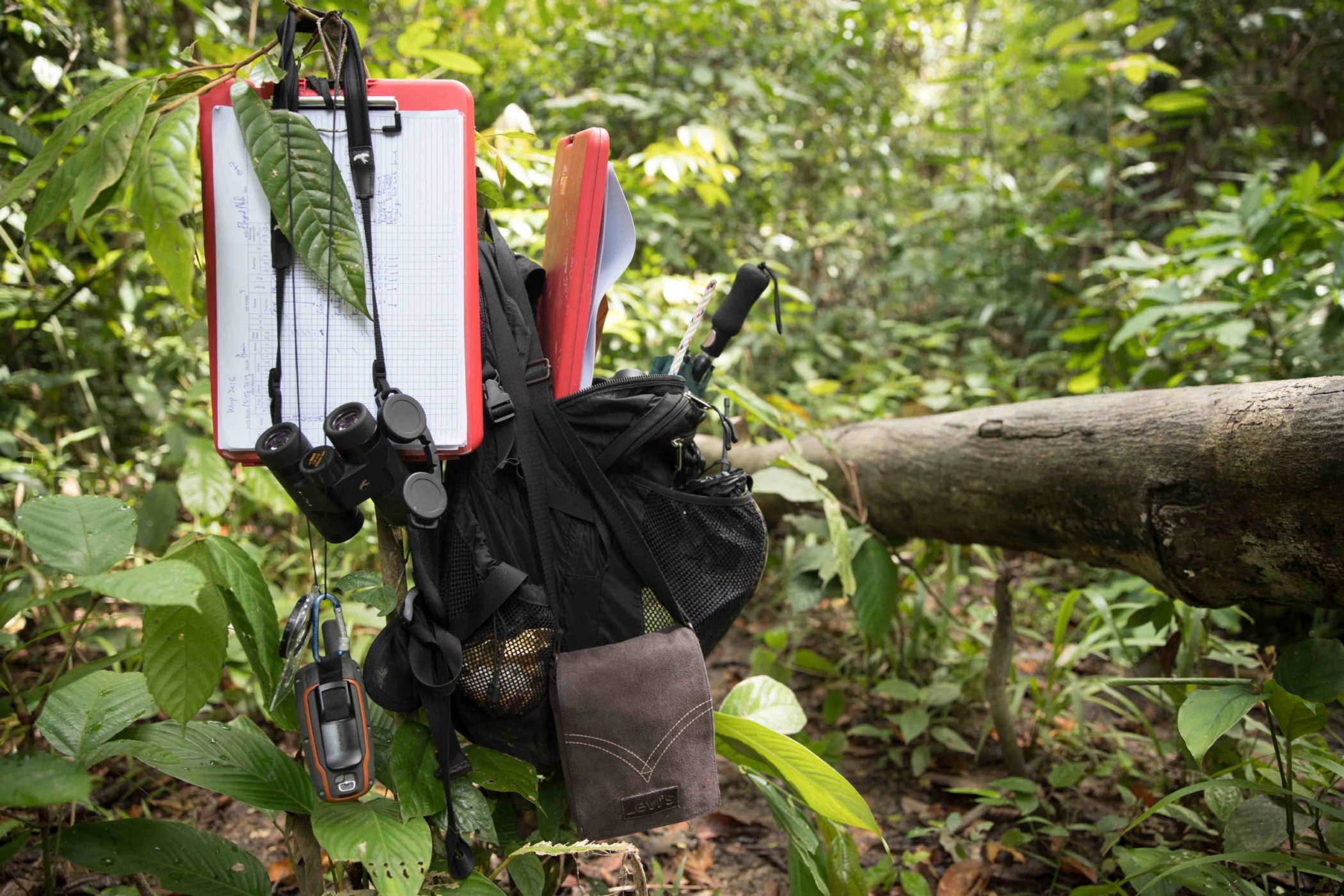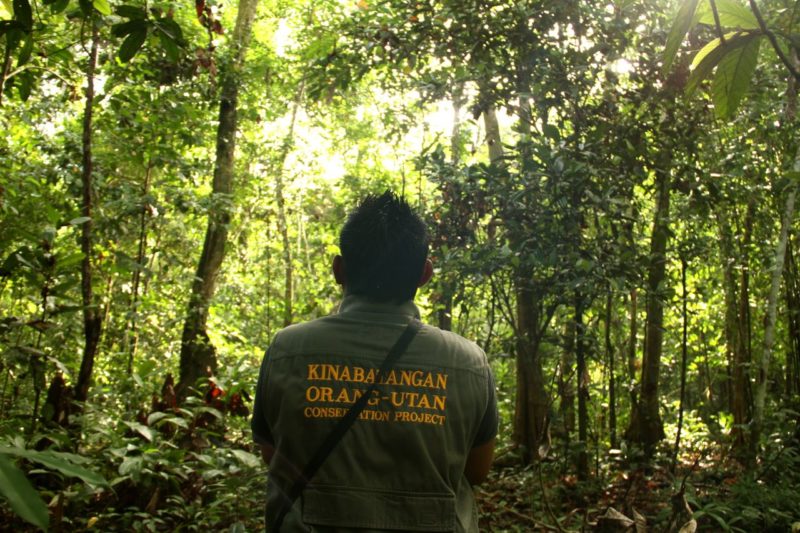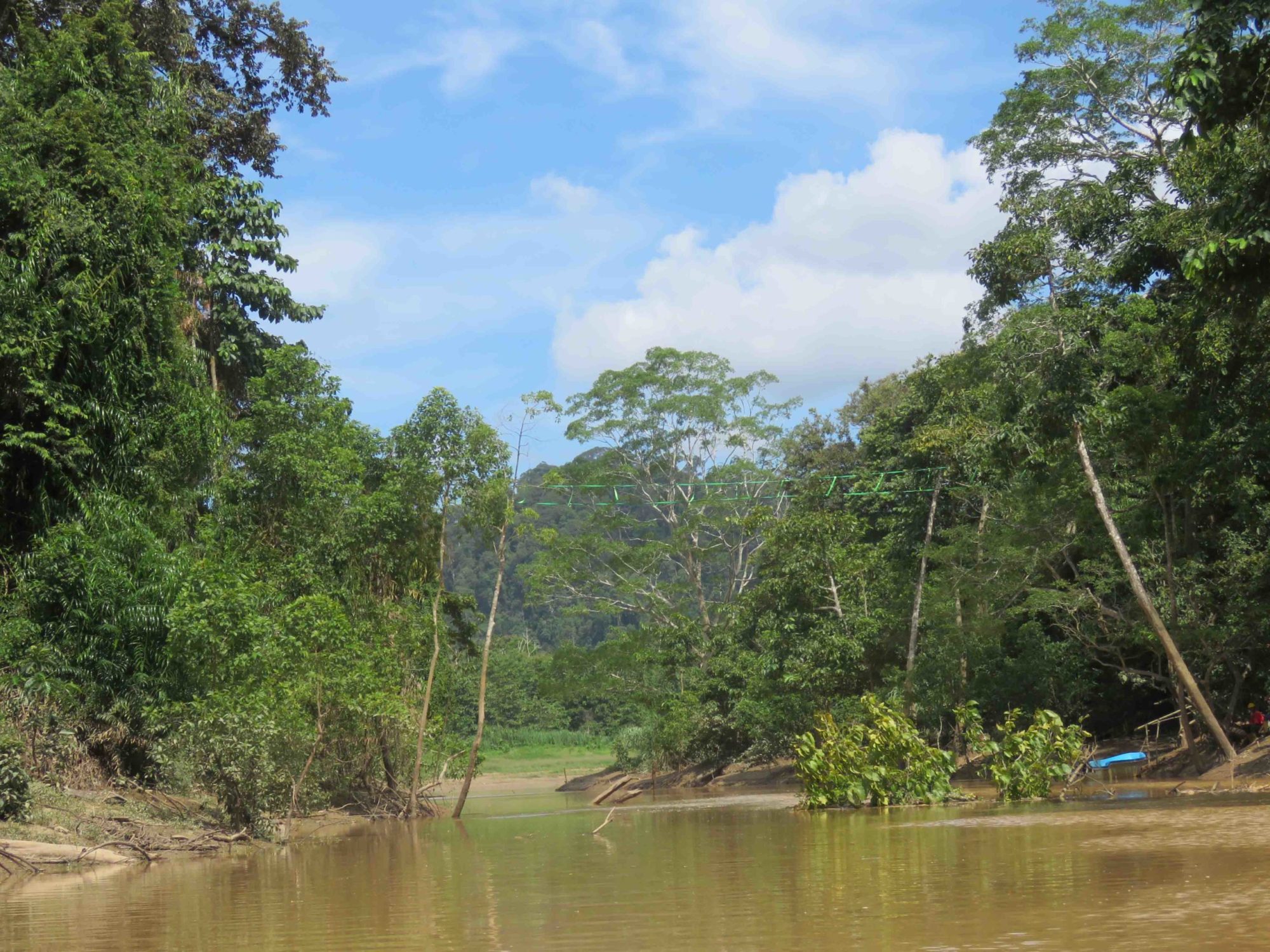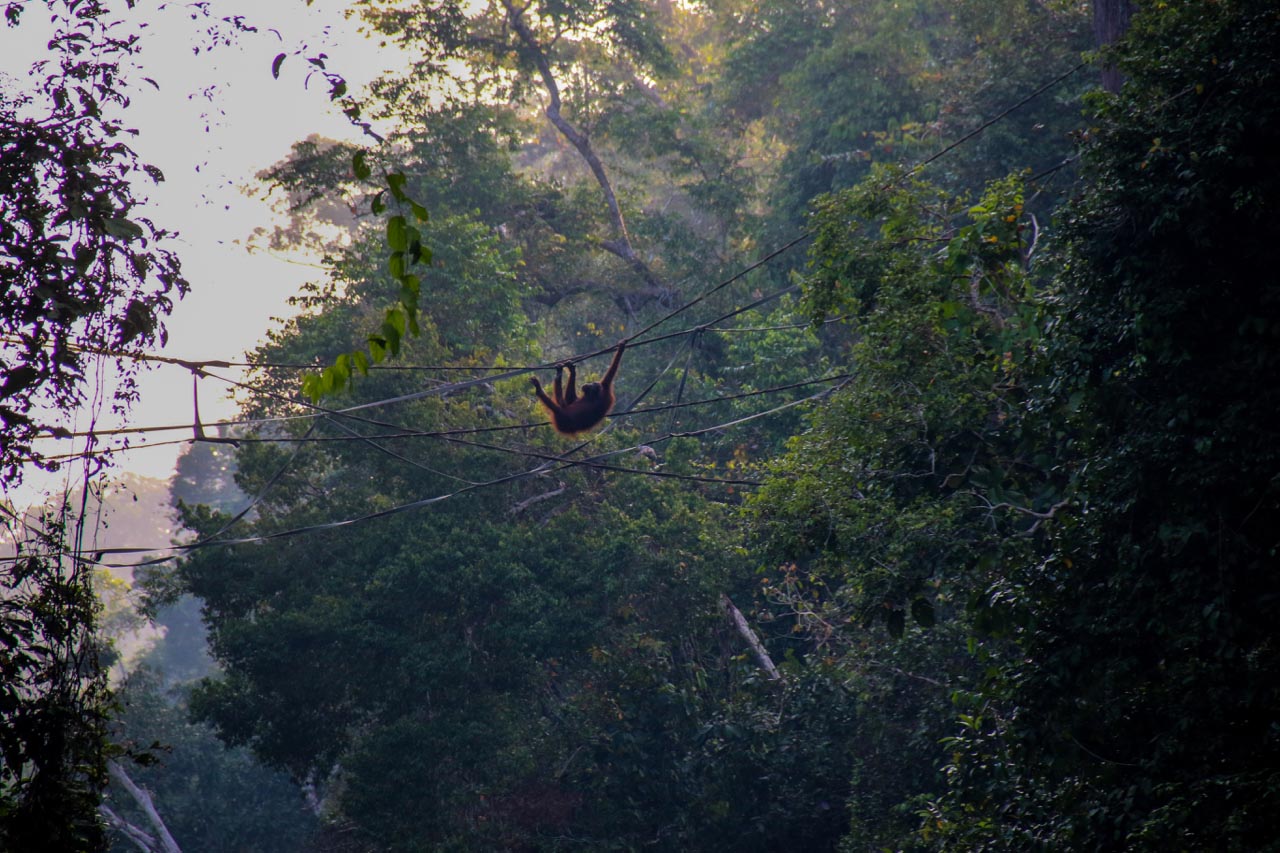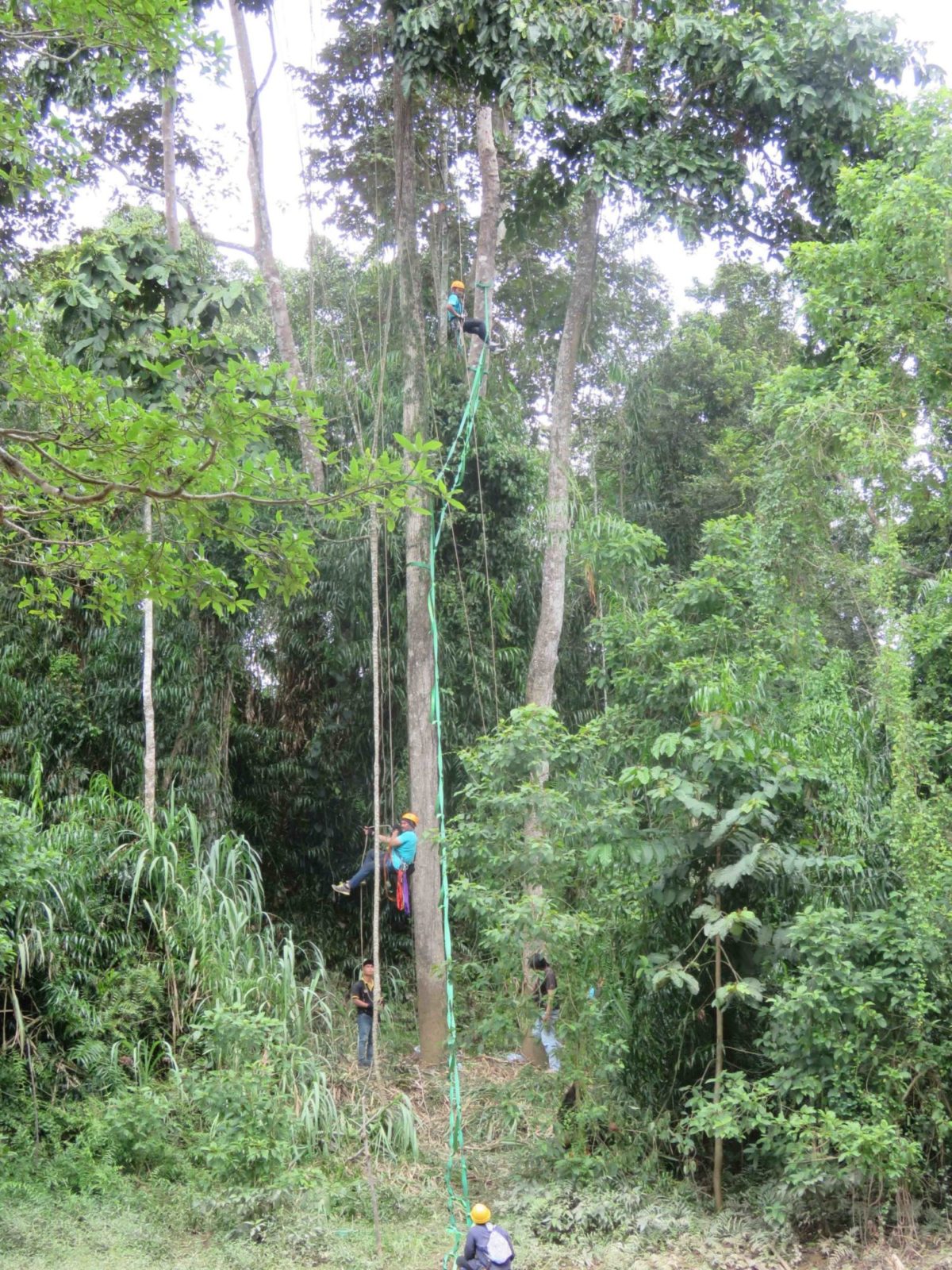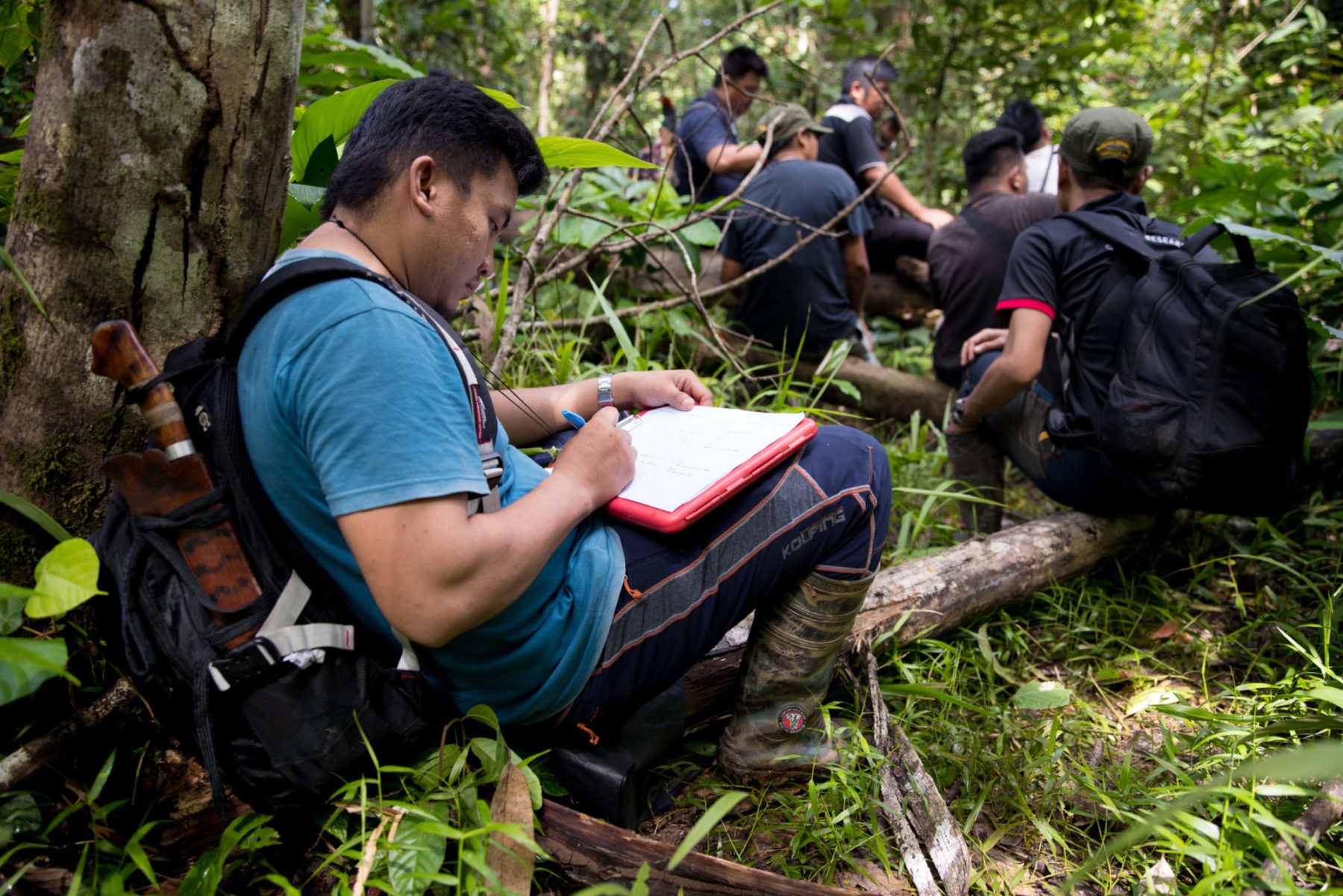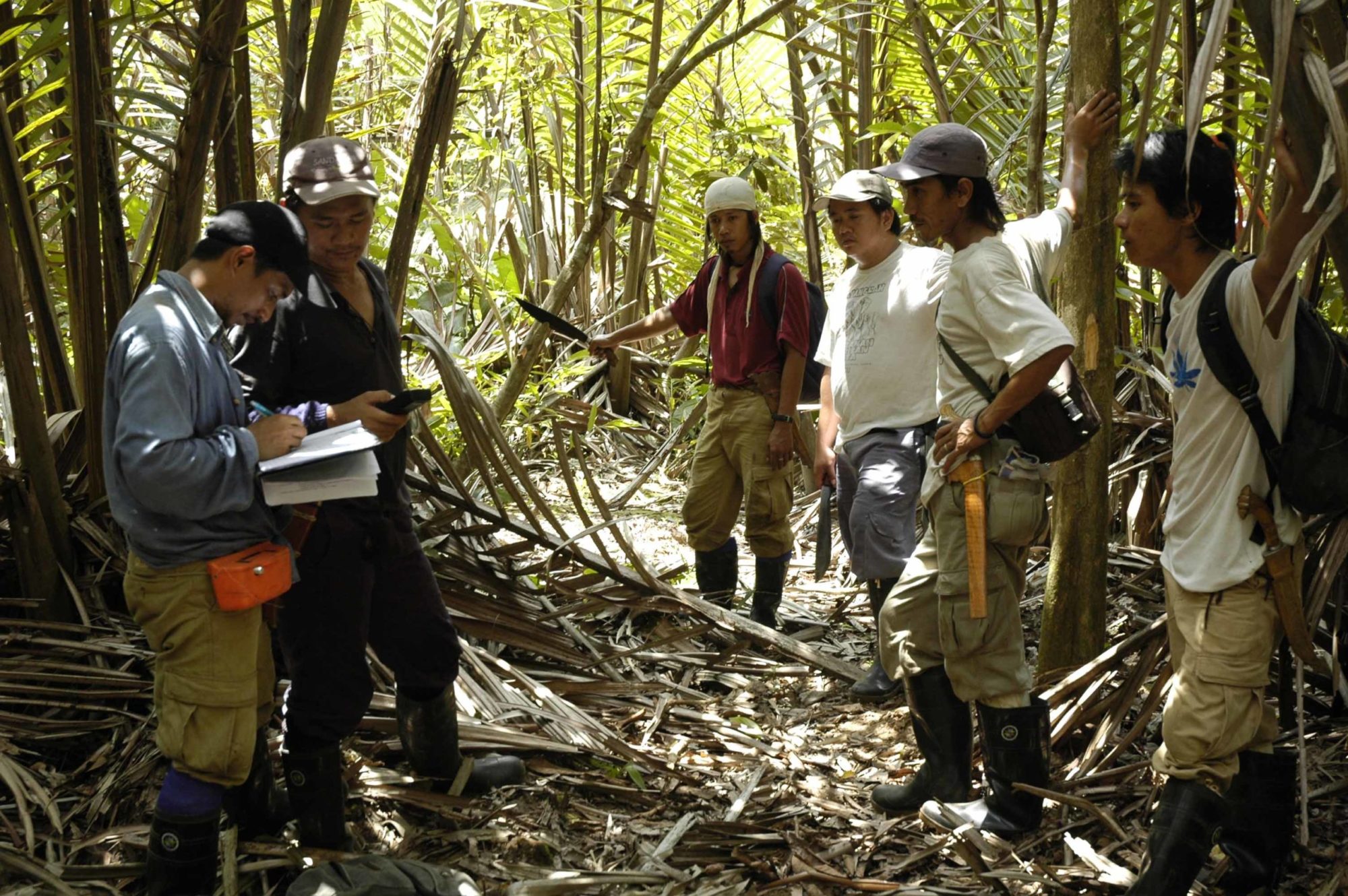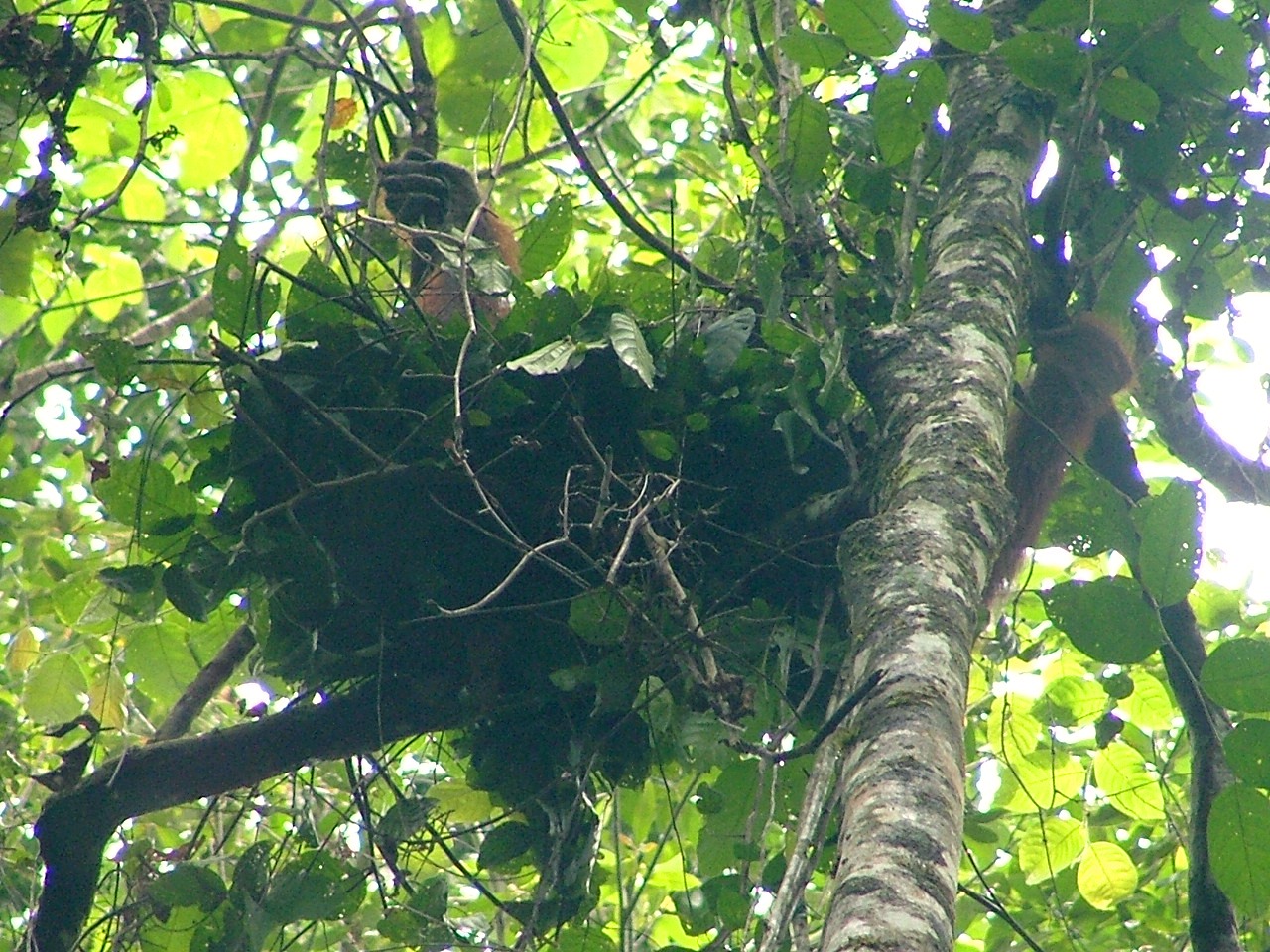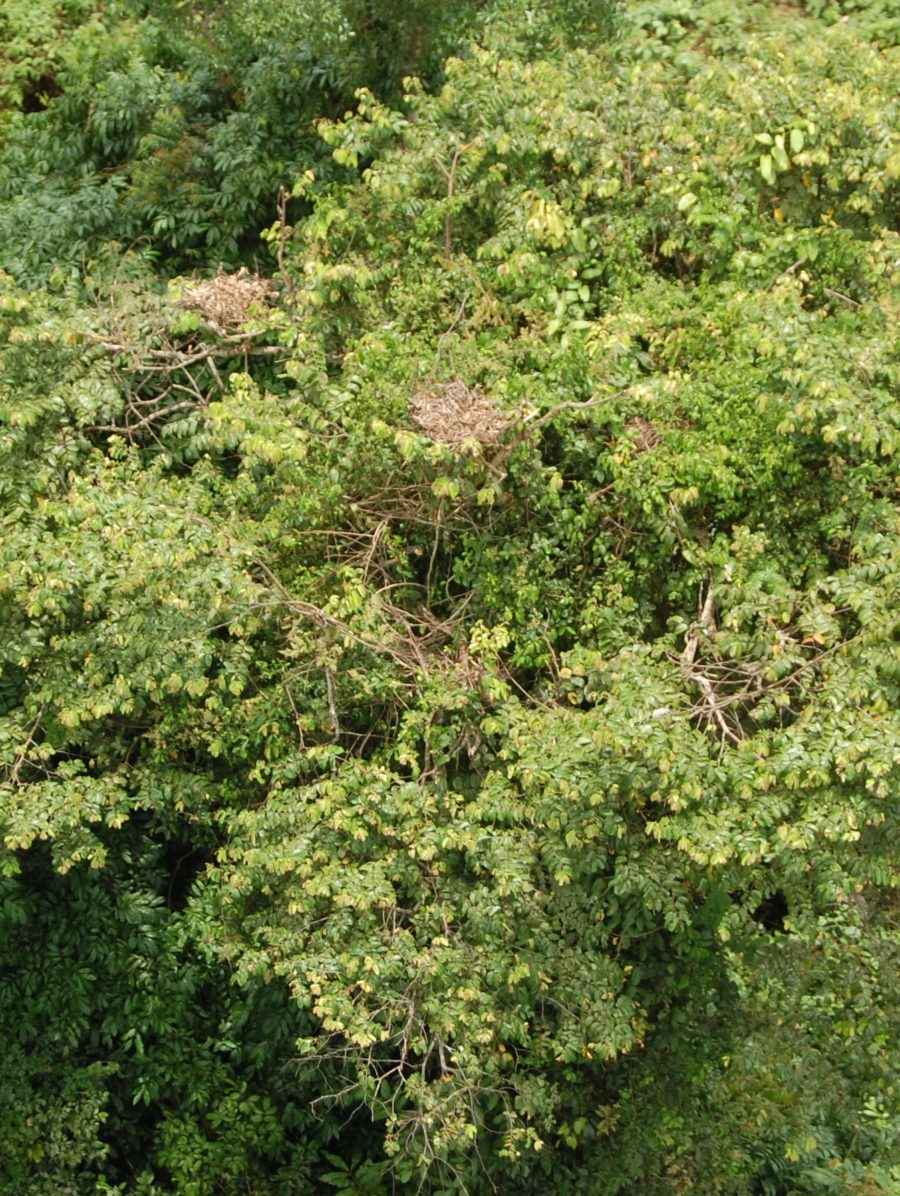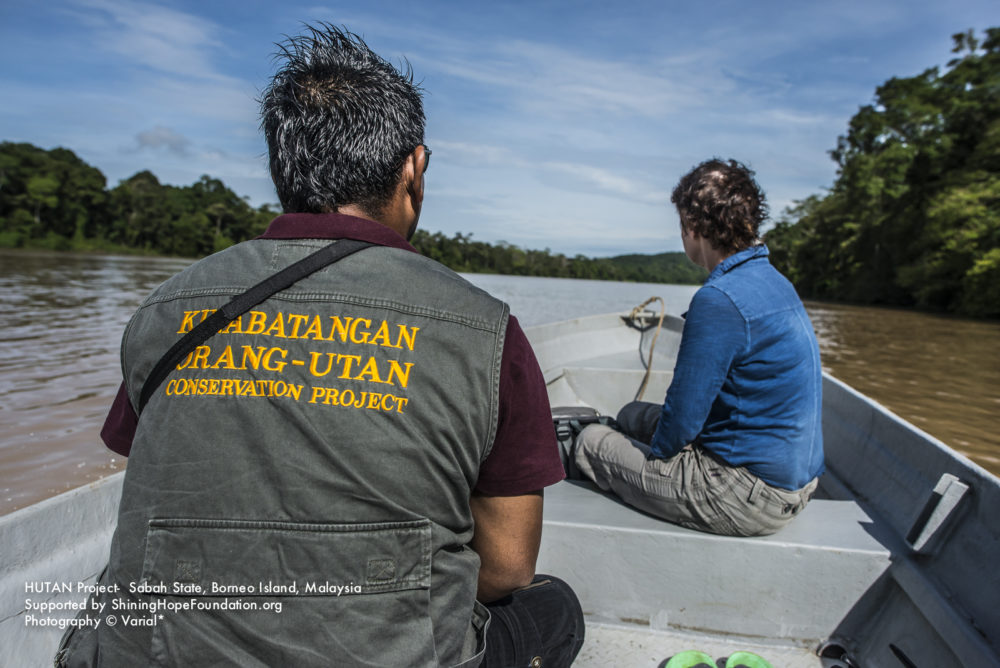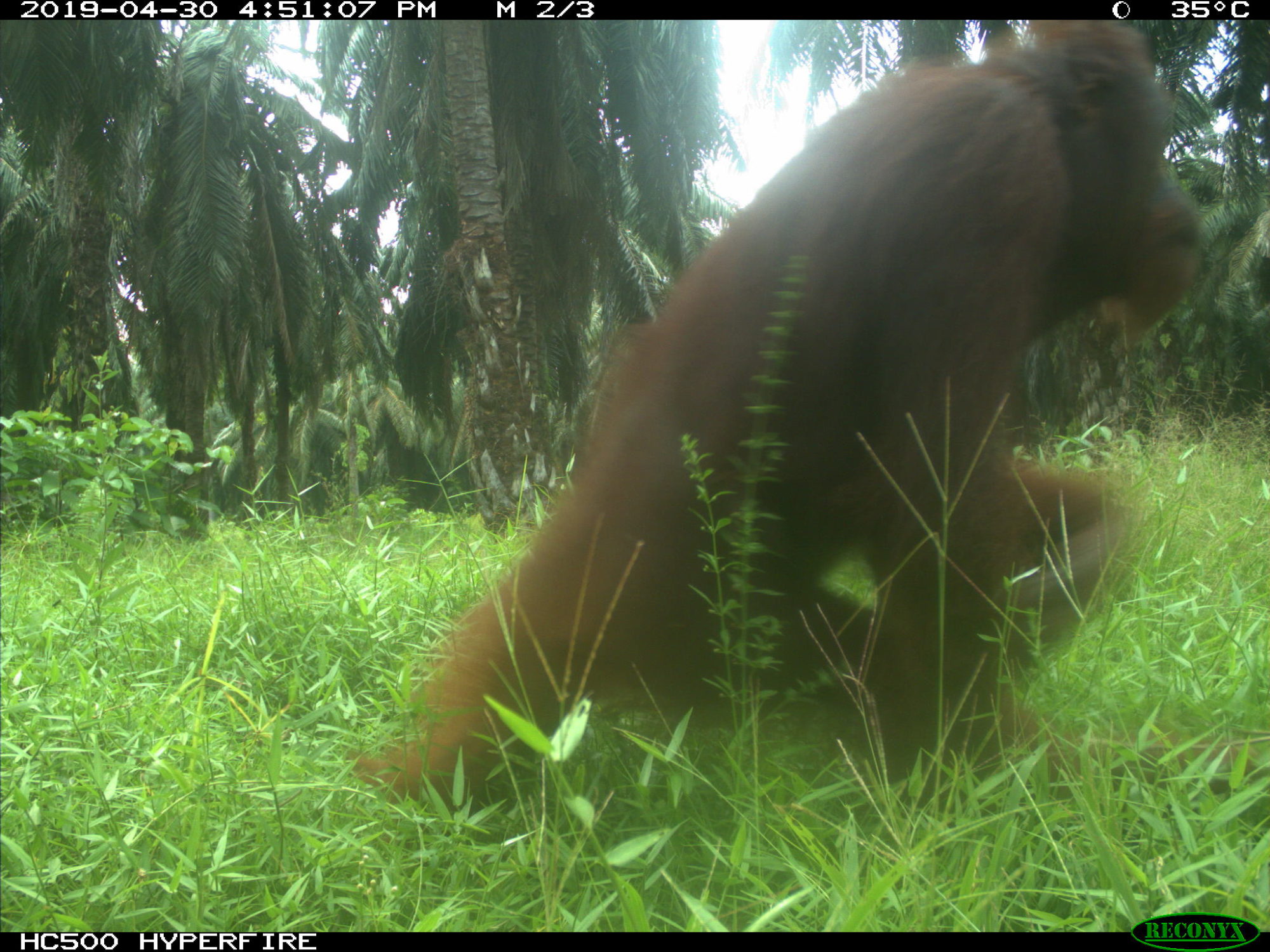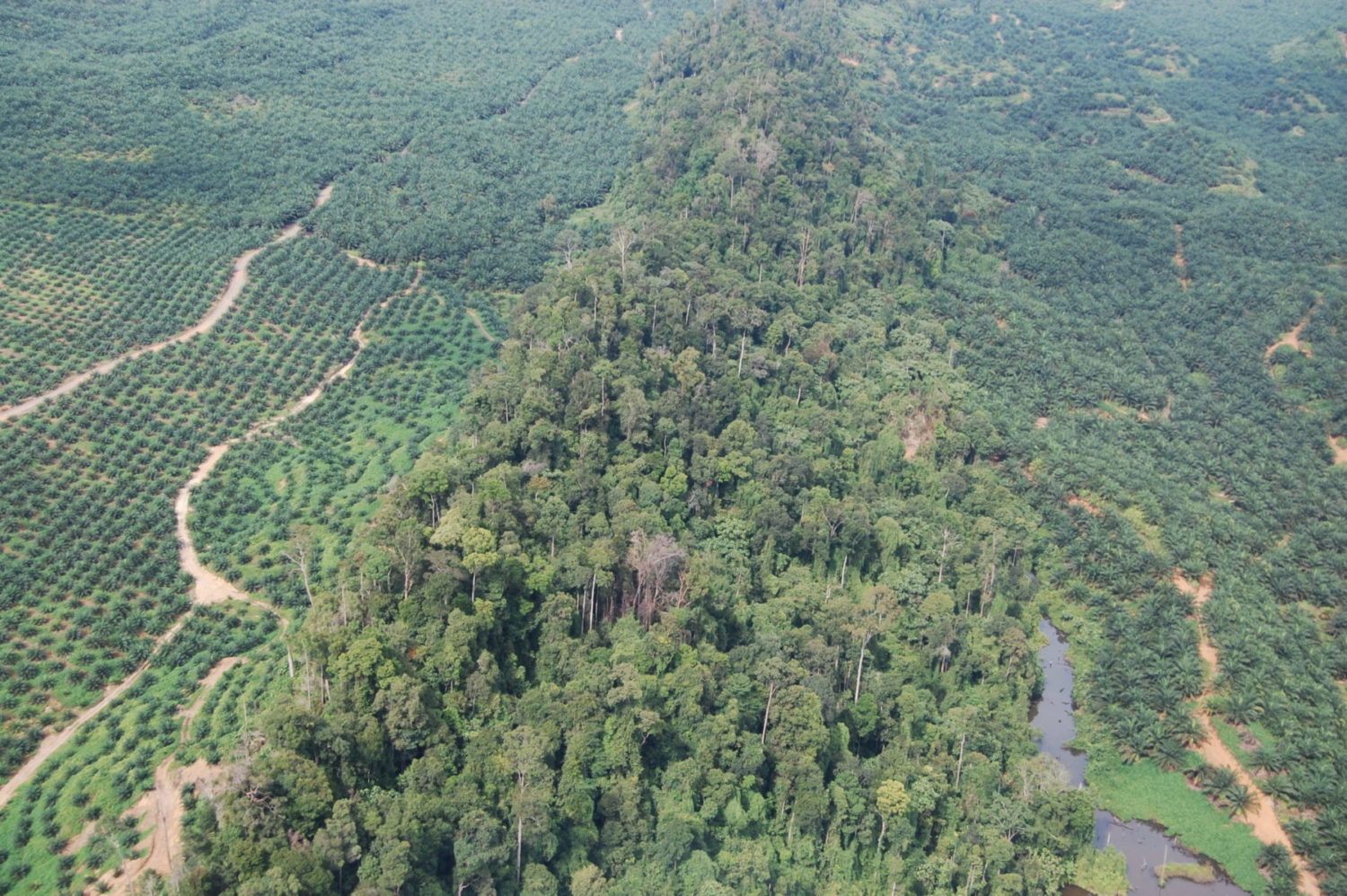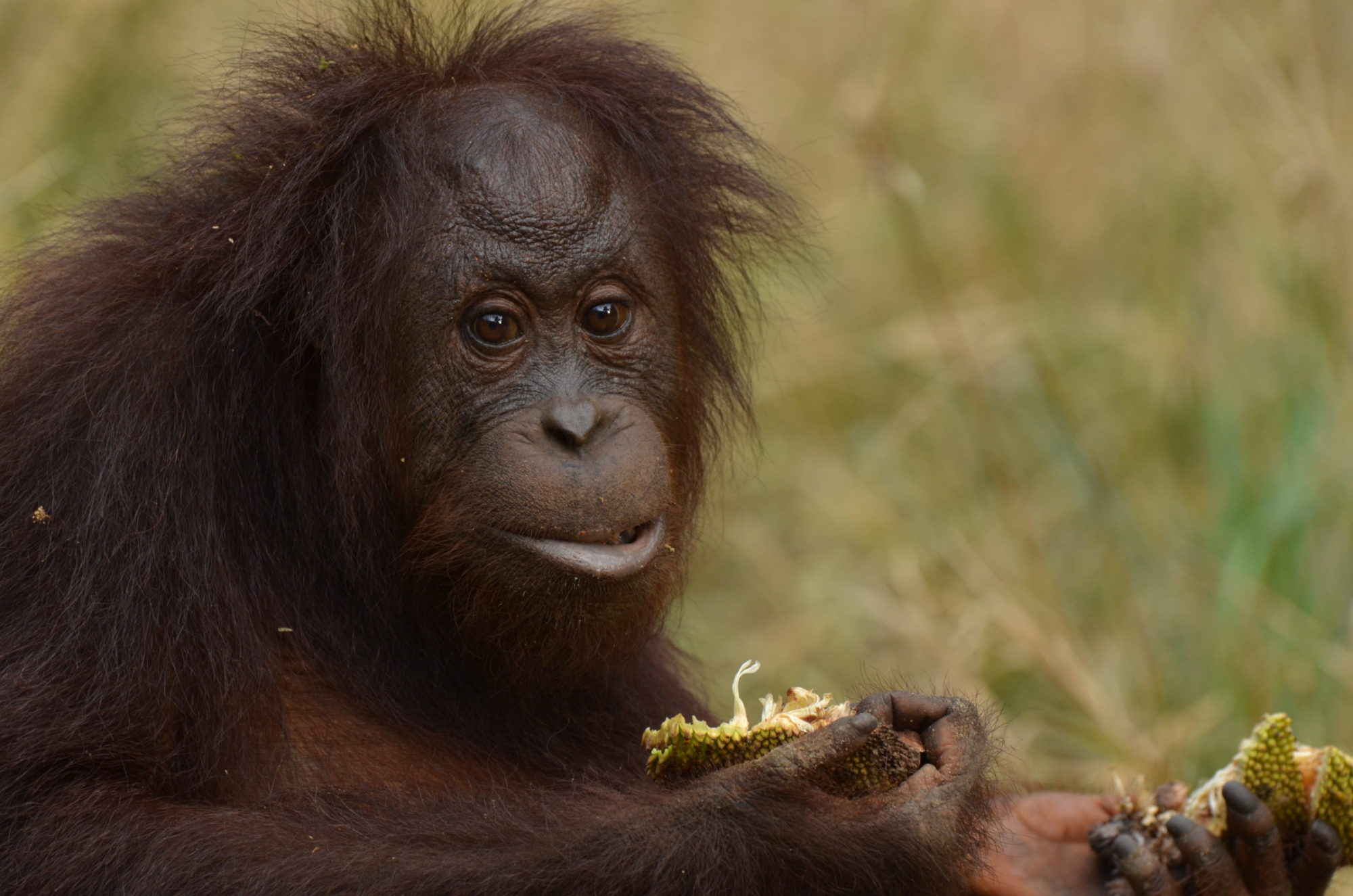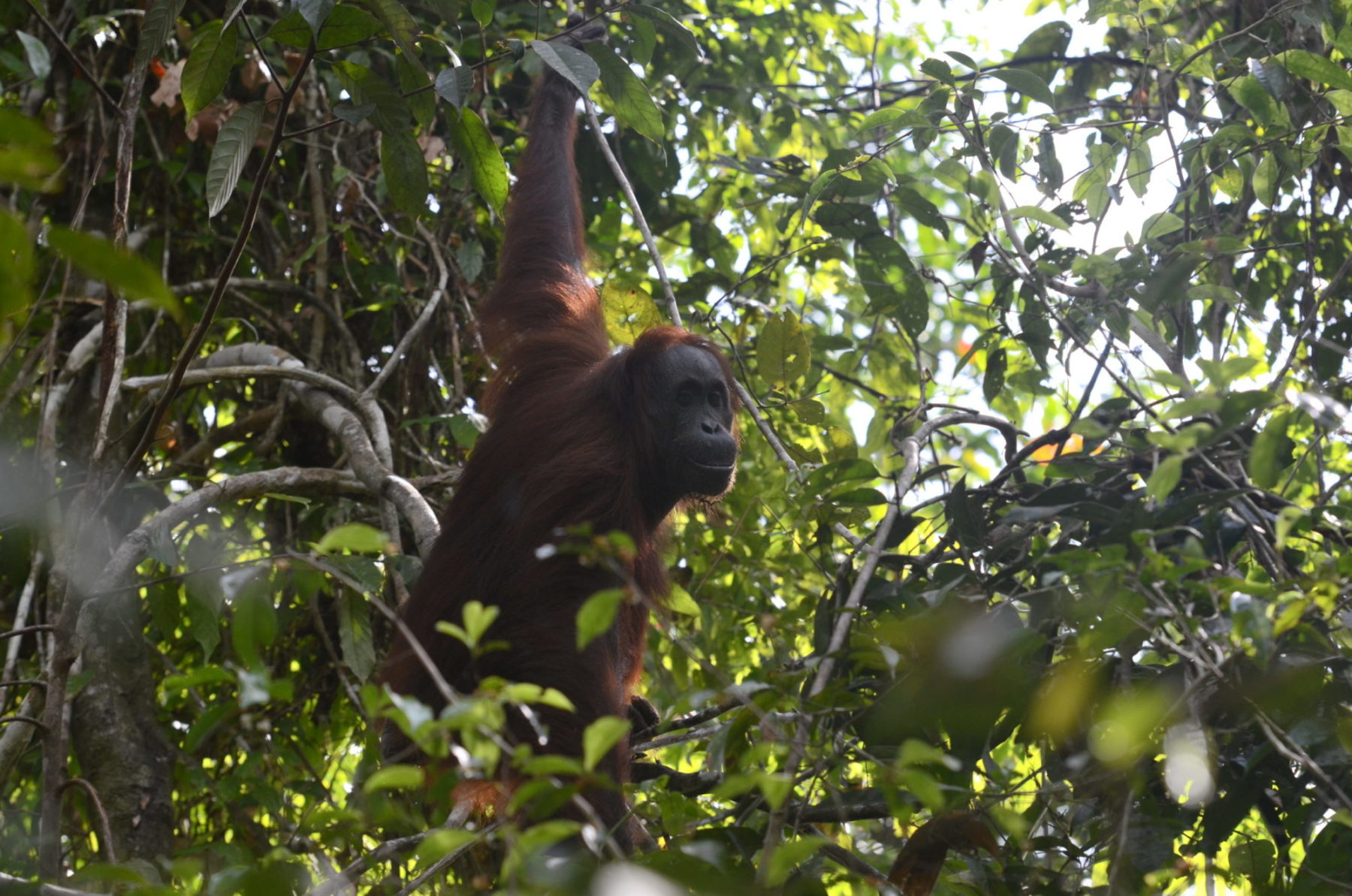We conduct ground-breaking studies of wild orang-utans in degraded forest and non-forest habitat to design new ways to protect the species in the Anthropocene.
The orang-utans, only found in Borneo and Sumatra, are Critically Endangered. The major threat in Borneo is the loss of the ecological integrity of the islands’ lowland ecosystems and hunting. The Malaysian state of Sabah, located in the northern part of Borneo, harbors about a fifth of the Bornean orang-utan population, making it one of the major strongholds for the conservation of the species.
HUTAN believes that a crucial approach to preventing the extinction of orang-utan populations in Borneo is to actively engage and support stakeholders in creating innovative mechanisms where local development becomes compatible with the long‐term conservation of the orang-utan and of its habitat.
HUTAN intensive study site
Until recently, orang-utans were thought to depend entirely on vast patches of primary and intact forest to survive. In 1996, HUTAN’s original task was to determine whether this conception was true, or whether orang-utan was able to adapt and to survive in degraded forests. In 1998, HUTAN established the Kinabatangan Orang-utan Conservation Program (KOCP) intensive study site, in what would become in 2005 Lot 2 of the Lower Kinabatangan Wildlife Sanctuary. We recruited a team of villagers to follow wild orang-utans at this site and since that time the KOCP Intensive Study Site has been the location for the longest uninterrupted orang-utan
research study in Borneo. More than 25,000 hours of direct observations by the OURs team show that orang-utan can survive and thrive in degraded forests and in forests exploited for timber following sustainable practices. It is currently accepted knowledge that disturbed forests are part of the species’ habitat and can sustain viable orang-utan populations, if hunting is not a threat. This finding is crucial, considering that the vast majority of remaining orang-utan populations in Borneo are found outside of primary forests and protected areas.
Orang-utan bridges
Past timber activities in the floodplain have resulted in the destruction of many of the large tall trees that were used as “natural bridges” by orang-utans and other non-swimming animals when they needed to cross small rivers and tributaries. These impassible rivers and streams became a factor in fragmenting even further the overall orang-utan population, making it more vulnerable to extinction. With the support of our zoo partners, HUTAN erected the first orang-utan bridge above the Resang River in 2003.
Over the years, we tested different designs, using old fire hoses and various webbing materials. Although macaques, proboscis monkeys, squirrels and others quickly made use of these bridges to cross the tributaries, it took much longer, a few years, for orang-utans to start using these bridges. Today, orang-utans do make good use of these connectors. We are erecting and maintaining “orang-utan bridges” above all tributaries where natural “bridges” have been removed.
Orang-utan surveys and monitoring
Assessing orang-utan population size and distribution is key to designing adequate conservation strategies and assessing their efficiency. However, orang-utans are elusive and they occur at relatively low density throughout their entire range, which makes counting them a very difficult challenge. Surveying orang-utan nests is the conventional approach to determine orang-utan densities. However these nest surveys are time consuming and cover a very restricted range of any given population. This makes orang-utan surveys and monitoring a very difficult and costly endeavor. In the early 2000’s, HUTAN designed a new way to survey orang-utans from the sky by using helicopters. We were able to determine the status of the species across the entire state of Sabah.
Today aerial surveys are commonly used to monitor orang-utan populations across the State. We are also testing the possible use of drones to conduct surveys over smaller areas.Through an international scientific collaboration, we recently combined data originating from nest surveys, interview surveys, and camera-trap surveys to test innovative modeling approaches that provide information regarding population size and trends. These new developments are going to make possible a more thorough monitoring of orang-utan population trends in Sabah and across their entire range.
Contributing to the creation of protected areas
Based on the results of the surveys undertaken by HUTAN and the Sabah Wildlife Department, the Sabah government increased the size of the protected areas in the state from about 12% of the land-mass in the early 2000s to 26% today. The ultimate goal of the State government is to fully protect 30% of Sabah land-mass. Today more than 80% of the current orang-utan population found in Sabah occurs in fully protected forests.
Orang-utan and oil palm plantations
Over the years, the OURs team realized that orang-utans were increasingly using mature oil palm plantations for dispersal (they walk on the ground or move from palm fronds to palm fronds), as food sources (they feed on young leaves or ripe fruits) or for resting (they build their nests in the central part of the palm). Although pure stands of mature oil palms, such as found in extensive industrial plantations, cannot sustain viable populations and cannot be considered as orang-utan habitat per se, it is urgent to acknowledge that palm oil plantations can become part of the overall orang-utan habitat as long as they retain patches of natural forests.
These new findings of course have a very important impact on our perception of the dynamics of meta-population, population, and sub-population, and their viability.Therefore, we are currently engaging with willing oil palm companies to maintain or recreate corridors and patches of natural forest within plantations. Such a mosaic will enable wandering individuals (mostly dispersing males) to cross these landscapes. It will also allow for resident females to establish their territory within a mixed mosaic habitat where they can raise their infants.
Conclusion
Orang-utan is one of our closest living relatives, and as such, it appears to be a very adaptable species. Animals may be able to survive in highly transformed mosaic habitats where forests and non-forest habitats are well organized and properly managed. Identifying methods for people and land-users to better accept cohabitation with the “man of the forest” is critical to ensuring the survival of orang-utans and many other species in the “anthropocene” era, a time where everything is deeply transformed by human activities.
